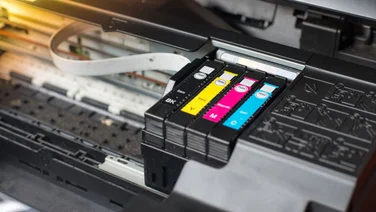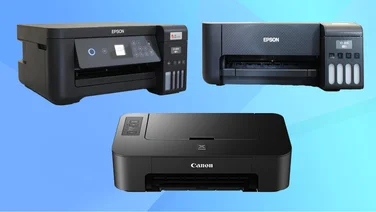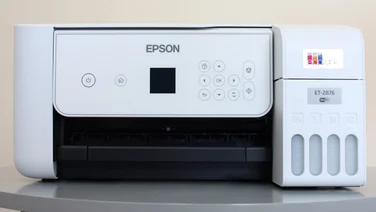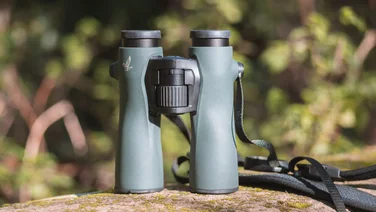To help us provide you with free impartial advice, we may earn a commission if you buy through links on our site. Learn more














Update: The Canon EOS 100D is no longer available to buy new, having been superseded by the Canon EOS 200D. The newer model might not be quite as compact as the 100D, but in every other way it’s a big step up from its predecessor. It offers a Dual Pixel sensor, which dramatically improves autofocus performance for both stills and videos in live view, and also has a better handgrip and articulated touchscreen. This makes the D200 a great choice if you’re in the market for an entry-level Canon DSLR, especially if you want to shoot video.
If you’re not fussed about having a Canon, the Nikon D3400 remains our favourite budget DSLR thanks to its lower price and lower noise at fast ISO speeds. However, its screen isn’t articulated or touch-sensitive and its video autofocus isn’t as reliable as the Canon EOS 200D’s.
Original review continues: The Canon EOS 100D is a fully-fledged SLR, with many features in common with the excellent Canon 700D, which was announced at the same time. However, Canon has since expanded its range of EOS DSLR cameras that form its ‘Beginners’ range with the EOS 750D and 760D. There is also now the newer EOS 1300D. One of the big draws of the new cameras is their Wi-Fi connectivity, which makes sharing photos much easier via your smartphone without having to resort to separate solutions such as Eye-Fi memory cards.
The 700D is still widely available and remains significantly smaller, though, shaving about 10 per cent from each dimension and weighing 30 per cent less, at 407g (body only). The shrunken handgrip looks strangely emaciated but it’s a surprisingly comfortable fit even in large hands. The battery has a 380-shot capacity to the 700D’s 440 shots – not ideal, but we could live with it.

^ Price, specifications and rating are based on this 18-55mm IS STM kit
The diminutive design should appeal to people who might otherwise choose a compact system camera (CSC). However, much of the benefit is lost once the sizeable kit lens is attached. This new 18-55mm lens bears an STM suffix (which stands for STepping Motor) to denote its improved performance in live view mode, and smoother, quieter focusing during video capture.

These are welcome improvements over the previous kit lens, but the downside is that it’s 5mm longer. The size and weight loss compared to the 700D might be technically impressive, but they won’t affect day-to-day use all that much with that lens attached. Canon’s 40mm f/2.8 STM pancake lens is a better match, and isn’t too expensive at around £130 including VAT. Alternatively, the Canon EF-S 24mm F/2.8 is available for around £110 if you want something wider. Both lenses have a larger aperture for low-light performance versus the standard kit lens but without image stabilisation.
Canon EOS 100D review: Performance
Size differences aside, the 100D and 700D are very similar. Both use the same 18-megapixel sensor, which incorporates phase-detect autofocus technology introduced on the Canon EOS 650D, but now has a wider coverage across the frame. Both offer in-camera chromatic aberration removal, which eliminates halos of discoloration towards the edges of JPEGs. Enabling this feature took a heavy toll on continuous performance, though, falling from 4fps to 2.2fps after just four frames. This 4fps top performance is slower than the 650D and 700D’s 5fps continuous mode. With the same sensor and processor, we can only assume that Canon has deliberately hobbled the 100D’s performance to differentiate the two cameras.
Canon EOS 100D review: Controls
The 100D uses the touchscreen interface that we first saw on the 650D. It works superbly in tandem with the physical buttons and dials – hit the Q button to see the available controls, select one with the touchscreen and adjust it with the command dial. It’s such a successful system that it took us a while to notice that Canon has removed the labelled functions from the four-way navigation pad. The touchscreen also comes in useful when setting the autofocus point in live view mode, and for zooming into photos and assigning star ratings during playback. What sets the 700D apart, however, is its articulating touchscreen that can flip out and rotate. This is useful for a number of reasons, including taking low-angle photos as well as any ‘selfies’.

Otherwise, the two cameras’ controls are largely identical. The Q and Set buttons have been merged but the consequence is negligible. The 100D’s screen isn’t articulated, though. That’s a shame, as the phase-detect points on the sensor and the new kit lens combine to deliver responsive autofocus in live view mode – something that’s been a long time in coming for EOS cameras. It’s still not as quick as the best CSCs, taking around half a second to focus and delivering a photo every 1.9 seconds, but it finally means that live view is responsive enough to be used routinely.
The viewfinder still gives best results, with extremely fast performance from the primary 9-point autofocus sensor and photos captured every 0.5 seconds. Nine autofocus points don’t compare well with the 39 points on the Nikon D5200, though. Whereas the 650D and 700D use nine cross-type point for added sensitivity, on the 100D only the centre point is cross-type. On the upside, autofocus was more reliable than we’ve seen from the 650D and its predecessors using their kit lenses, with only a small number of shots focused slightly in front of the subject we aimed the camera at.
Canon EOS 100D review: Image quality

Image quality lived up to our high expectations. We love the colour output of EOS cameras, and with well-chosen automatic settings and extremely low noise at fast ISO speeds, it’s hard to get anything but great results from this camera.



The flash is somewhat underpowered, with a guide number of 9.4m to the 700D’s 13m, but then we rarely feel the need to use the built-in flash when noise levels are this low – shooting in ambient light invariably gives better results. The 100D also lacks the 700D’s ability to control Speedlite flashguns wirelessly, which is a bigger disappointment for those who want to use flash creatively.
Canon EOS 100D review: Video quality
The new STM kit lens makes a big difference for video capture. Whereas previous EOS cameras’ videos were spoiled by violently clunky autofocus, with the 100D and 18-55mm STM lens it glided smoothly and silently. It could still be a little slow to respond when we adjusted the autofocus point with the touchscreen, but it’s good enough for casual use, and the shallow depth of field gives a luxurious film-like quality to clips. Keen videographers will appreciate full manual exposure control, including silent exposure adjustments via the touchscreen during recording. Priority modes are unavailable for video, though, and moiré interference across repeating textures make this camera less than ideal for serious video work. The Panasonic Lumix DMC-G6 is much less susceptible to moiré, and also exhibits crisper details in videos.
Canon EOS 100 review: Verdict
The 100D is easy to like. Its ergonomics are surprisingly successful and image quality is only significantly bettered by full-frame cameras. When first launched it cost a whopping £575, which was a substantial amount of money for an entry-level DSLR, but prices have now tumbled to as little as £279 if you shop around. That’s an attractive price for anyone who wants an APS-C based camera with access to the huge range of lenses available for Canon EOS DSLRs.
Go one step up to the Canon 700D and you get an articulated screen, nine cross-type autofocus points, faster burst shooting, a more powerful flash, longer battery life and wireless flashgun control for around £100 more. Whether or not the upgrade is worth it is debatable given that image quality is largely identical. You’ll also need to contest with the larger body size if compactness is a priority.
Still, if you want a ‘proper’ DSLR, if low size and weight are priorities, and you want access to the wealth of Canon (and Canon-compatible) lenses, this camera fits the bill nicely – and it’s a small bill at that. As an entry-level DSLR for someone looking to start out, the 100D is an excellent choice. As it’s now so much cheaper, it makes an excellent introduction to DSLR photography and isn’t too big an investment should you eventually outgrow it and see yourself wanting a more fully-featured DSLR. At this point, it will make a more than capable secondary camera body.









